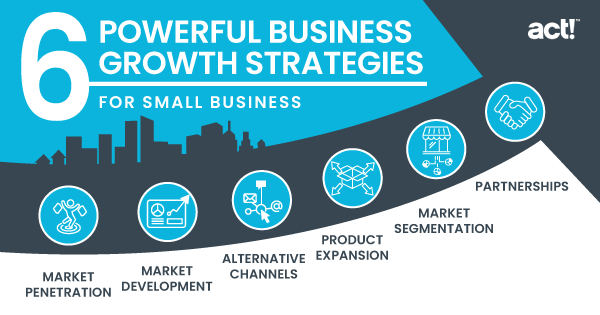
As much as we all want to kick off 2022 on the right foot, many small businesses (SMBs) still face some tough hurdles. If you’re struggling with sluggish business performance, you’re not alone. Start-ups and entrepreneurs of all types have been feeling the pinch on several fronts, but key growth strategies can help you reinvigorate sales and drive growth.
To start, let’s identify some of the current challenges facing the SMB landscape. For one thing, widely reported snags in the global supply chain have hit small businesses harder than others. Many have to scramble to find new suppliers as larger companies buy up available quantities of just about everything from cardboard to food containers.
What’s more, the rapidly spreading labor shortage has drastically impacted small businesses. In Q4 2021, more than half (51%) of small businesses said they couldn’t fill all of their job openings. A whopping 92% of those polled said they received few if any, qualified applicants to fill their job openings. And, as the pandemic drags on into another year, it can be easy to feel discouraged by all of the global uncertainty.
However, for all of these reasons and more, it’s important to stay focused on your long-term business goals. Whether your company is a new business or well established, here are six ways to jump-start your business growth strategy over the next 12 months.
1. Market penetration: Increase your market share
Building more market share, also known as market penetration, is one of the best business growth strategies for small businesses. Basically, the goal is to sell more of your existing products or to successfully promote a new product. There are many ways to accomplish this goal. For instance, you could offer new services as a free trial or at a discounted price to existing customers. You can also offer discounts on larger orders or reduce the price to beat a competitor’s similar offering.
Although lowering prices may be unappealing at first, it can be a good short-term expansion strategy for businesses selling products similar to those of their competitors. For example, businesses with relatively generic products (such as household cleaning supplies) can benefit from adopting this market penetration strategy.
If you can’t increase or improve your product range and must continue to promote existing products, it may be necessary to make products more attractive by including free offers or discounts on future purchases.
2. Market development: Attract new customers (and retain existing ones)
You might be a pro at retaining existing customers, but what about winning new ones? If you don’t have a market development strategy designed to reach new customers, you could be missing out on a valuable market. This is especially important if sales of existing products have stagnated or if you’re looking to expand your market reach to a new geography or target demographic.
Sales and profits are apt to suffer unless a business finds new markets for its products and services. This is especially important during the Covid era when many traditional ways of selling and purchasing goods have changed due to safety protocols and supply chain interruptions.
Take the example of a local gym that was forced to shut its doors at the beginning of the pandemic. To retain its existing membership, the gym quickly moved its classes online. It also created an extensive library of on-demand workout videos to help compete with lower-cost fitness apps. However, the gym still needed to attract new members to increase revenue, so it created several “pandemic bonuses” for joining. This included a gift card to spend at the gym’s wellness shop (which had the added benefit of increasing the shop’s sales). New members were also given discounts on socially distanced personal training and small, in-person group classes — advantages that generic fitness apps couldn’t offer.
As a result, instead of losing members as a result of Covid, the gym actually increased its customer base by using its local facilities and personalized resources to compete against impersonal fitness apps.

3. Alternative channels: Expand your online footprint
Leveraging alternative channels can be one of the best methods for business growth. Many business owners already promote their company through popular social media platforms such as Facebook, Instagram, and LinkedIn. However, you may want to consider how other channels can help you reach a new target market by creating a seamless brand experience.
Some marketing channels are absolute must-haves for any business. The top three include email marketing, social media, and your business website and blog. It’s interesting to note that more than one-quarter (28%) of small businesses don’t have a company website. Those that do often struggle to maintain it. Although template-based web design tools have made it much easier to launch a new website, customers expect more than just “brochure-ware.” They want to be able to make secure purchases, contact customer service, and conduct other transactions without visiting multiple online destinations.
This is where omnichannel marketing comes in. This approach goes well beyond maintaining a website and a couple of social media pages. Omnichannel marketing enables companies to reach customers wherever they are and deliver what they want on any channel, platform, or device. For instance, your company could offer support through Facebook Messenger, email, live chat, and phone, instead of just through the company website. Your Amazon store can be directly linked to your website so customers can make direct purchases without leaving your site.
Best of all, this approach can help you increase sales by appealing to the habits of omnichannel shoppers. This is a rapidly growing group of consumers who conduct extensive research across multiple channels prior to making a purchase. Some studies have found that omnichannel shoppers spend an average of 13% more than other customers, which is why your target audience should include this very important demographic.
While most business owners understand the importance of maintaining multiple marketing channels, it can seem like a daunting task. The good news is, many time-strapped small business owners can simplify management through integrated marketing automation tools. These types of tools make it easy to automatically capture qualified leads, create highly targeted email campaigns, track results, and optimize future campaigns.

4. Product expansion: Refresh or renew your offerings
If sales are down, it might be time to revisit your product development lifecycle to see how your product features and prices compare to those of your competitors.
Even if your product line has been circulating in the market for months or even years, you can always benefit from a product review. Here are some key questions that may help you understand why your product isn’t selling, and how to make critical updates to boost sales across new and existing markets:
- Have you evaluated new market research lately? Have any market factors emerged that would impact demand for your current products or services?
- When did you last revisit your product marketing strategy? Perhaps the product’s value proposition and key messages no longer resonate with your current market.
- How does your product compare to competitive offerings? Do they offer more features or better quality at a similar price?
- Are you listening to customer feedback and reviews? How often do you evaluate customer service requests to determine which product or service features trigger the most issues? What do customers say about your offerings on review sites like Yelp and Google?
By performing a forensic review of your product line, including features, quality, market changes, and competitive factors, you can then determine how to move forward. That may include retiring or upgrading old products, introducing new products, or creating a new market strategy that resonates with new and prospective customers.
5. Market segmentation: Target customers with laser-like precision
Market segmentation is another small business growth strategy. Instead of lumping your customers into one large group, you can segment and market to them based on detailed factors such as customer preferences, purchase history, interests, locations, and other characteristics. These segments allow you to create highly targeted and personalized campaigns that have a much higher chance of success.
You can also use market segmentation to compete more effectively in a large market with a crowded playing field. So instead of trying to cast a wide net, you can use detailed market research to identify top buyer personas for your products and services. This research might consist of email surveys, website analytics, and purchase histories to tease out specific customer traits and preferences that can inform your email and social media marketing campaigns.
Although this process might sound complicated and time-consuming, powerful customer relationship management (CRM) tools can automate much of the heavy lifting for you. The right CRM platform can help you develop a solid data strategy to help you segment your customer base using visual, easy-to-understand metrics. You can also track results and modify marketing campaigns to ensure your diversification strategy is meeting your goals.

6. Partnerships: Join forces with complementary businesses
Let’s be honest: Smaller businesses typically don’t grow through large-scale acquisitions and mergers like enterprise companies. So how can a small company grow in a scalable way that drives revenue?
Sometimes joining forces with another business is the most viable path for small business growth. Depending on your business type, partnerships might provide extra resources in terms of manpower, skill sets, knowledge, equipment, or technology. Or it simply might enable both businesses to expand into new markets without directly competing with each other.
For example, entrepreneurs such as plumbers and electricians might form a partnership to help each other win a greater share of the market by providing complementary construction services as a package. Customers save time, money, and potential construction delays by eliminating the need to find and contract with separate providers.
Inject new life into your business
By using some or all of these six steps, you can quickly accelerate your small business growth in the months ahead. Even in the midst of an ongoing pandemic, you can still capture a larger share of the market, increase revenue, and stay ahead of the competition — all while delighting customers with outstanding products and services.
No matter what type of business you manage, a well-executed market expansion strategy can deliver the results you want. When coupled with a fully integrated CRM and marketing automation platform, the possibilities are endless.






